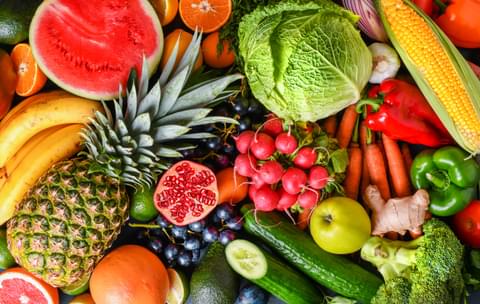

Top 5 Food Industry Trends Emerging in 2024
As we move into the new year, a question on everyone’s mind is: What trends can we see emerging in 2024? This article reflects on the top trends of 2023 and what our Business Managers can see emerging as we ease into 2024
As we move into the new year, a question on everyone’s mind is: What trends can we see emerging in 2024? Where is the food sector heading, and how can I stay ahead of what the consumer wants? We asked our business managers what trends they saw in 2023 and the top 5 trends that are beginning to emerge as we ease into 2024.
The top trends that emerged in 2023 were:
1. A reduction in stock of ingredients and finished products.
A reduction in stock of raw materials, ingredients and finished products typically indicates a decrease in the amount of material available for production or manufacturing. This could be due to a variety of reasons, such as increased demand, supply chain disruptions, or strategic inventory management.
2. Venture capital (VC) is harder to access.
Venture capital (VC) is a type of equity funding provided to start-ups and small businesses with higher growth potential. Typically, venture capitalists receive equity in the company in return for their investments. 2023 saw venture capital focus more on products with revenue and profits than ideas with the potential for success. This is a high-risk form of investment, and with the current economy, venture capital firms could be looking to slightly lower the risk of their investment with companies that have already proven some profitability.
This could result in some consumer needs not being met, with less innovation from new companies able to enter the market. However, the companies that are able to gain investment, could mean a boost in product development and processes optimisation with new technologies introduced by venture capital firms, potentially leading to better sustainability and probability of success.
“the top 5 food trends of 2024 reflect a dynamic and ever-evolving food technology landscape.

3. Consolidation (acquisitions or mergers) between companies.
Mergers and acquisitions are business transactions where the ownership of one or more companies or operating units is transferred to or consolidated with another company. Seeing an increase in mergers and acquisitions in 2023 could be due to a variety of reasons. There are a number of benefits associated with mergers and acquisitions; the top reasons are typically economies of scale, market expansion, strategic synergies, access to capital, and more.
For consumers, this could mean a reduction in cost, or a delayed price increase with improved efficiency and economies of scale. For the industry, access to cost savings, innovation, expanded market presence and capital can create a stronger entity with a firm place in the market. However, it’s essential to monitor for potential downsides, such as an impact to pricing and innovation because of reduced competition.

4. Healthy plant-based alternatives and a focus on health, sugar reduction.
In 2023, consumers began moving towards buying products with little to no additives and reducing their sugar intake. Consumers are becoming more health-conscious, which means the more ingredients listed on a product, including preservatives, the less likely a consumer is to purchase it.
5. Low- or no-allergen products.
Organisations have also moved towards reducing the allergens in their products; this makes the product more inclusive to those who would otherwise have been unable to consume it. For these organisations, this could lead to more sales and an increase in profitability.
What does 2024 look like?
As we begin 2024, the majority of the forementioned trends are still prevalent, but as the food landscape is evolving to meet the demands of a conscious consumer base, so are the trends emerging in 2024.
But what are they? These are the top 5 trends our business managers have seen emerging going in 2024:
1. Demands stabilised with stock levels of ingredients and finished products reduced to 2020 levels.
Demand stabilisation is a positive trend to emerge in 2024 because it enables stock levels of raw materials and finished products to stabilise along with it, reducing the risk of less products or materials being produced than the demand needs.
2. “Boom and bust” of biotech startups, as those without revenue streams can’t raise new funds.
With venture capital investing more in companies that have a proven profit than just an idea, fewer start-ups are able to raise the funds needed to grow their businesses. This has seen more biotech startups “boom and bust"—in essence, they made a strong start with good ideas, but eventually, with a lack of funding, we’ll can expect to see a drop off in the number of start-ups, but for those that do secure funding we can expect to see innovative and successful products on our menus soon.

3. More emphasis is placed on cost reduction and process optimisation than blue-sky innovation.
Inflation has caused an increase in the cost of the entire supply chain process, from raw materials right to the packaging and shipping of end products. Consumers are actively aware of the increase in cost of the food they are purchasing. With more consumers purchasing their food based on cost and not on brands, it’s essential for companies to focus on cost reduction and process optimisation to stay sustainable.

4. Increased interest in traditional animal-derived proteins, such as egg and milk.
With more consumers shifting to a plant-based diet, it’s interesting that there is an increased interest in egg and milk protein. This could be due to more consumers focusing on their health and the importance of including complete proteins in a balanced diet. This is an interesting trend to follow for 2024 and how it unfolds against the backdrop of a strong wave of interest and innovation in plant-based proteins in recent years.
5. The desire for minimally processed or clean-label products.
Nutrition has seen a surge in popularity following the COVID-19 pandemic, with the entire world realising the importance of looking after your body, so it’s no surprise that we see this trend popping up again in 2024. We are what we eat! And consumers are expected to be spending more time reading the labels on their foods and understanding exactly what it is they are eating.
In conclusion, the top 5 food trends of 2024 reflect a dynamic and ever-evolving food technology landscape. Whether you’re a niche company or work in multiple markets, 2024 is showing promise for innovation potential across a number of sectors.